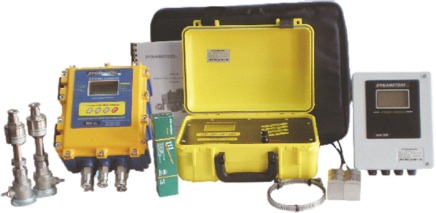Solutions Sampling & Flow
Autosampling and flow measurement are key requirements for many users involved in measuring and monitoring the liquid phase of discharges. The nature of a specific application can require a special type of sampling or flow measuring solution.Some examples of the these special solutions are found below.
 |
||
| Remote Sampling | MCERTS Atex Sampling | Flow Measurement Options |
|
First steps in Sampling The most important step in analysis is the first - taking a sample. If the sample does not have the same characteristics as the bulk of the water it will not give a meaningful reading, no matter how good the analysis. For example if a sample is to be taken from a rectangular tank, or a monitor is to be set up in a rectangular tank, it may well be that the corners of the tank are not well mixed and therefore will not give a useful representation of the majority of the water in the tank. If a sample is taken from a point away from the edge of the tank and where good flow and mixing are taking place it will be a much better representation of what is going on in that tank.There are two types of sample which can be taken. First a spot sample, grab sample, or discrete sample. Different names are used and they describe a situation where a volume of sample is taken at a single point in time. This is usually in the form of a bucket or bottle placed into the water - and a sample is taken. Secondly an automatic sampler can be used. These can be programmed to take certain volumes at regular intervals. For example it might take 100ml every 15 minutes for 24 hours and add this to a bottle making a volume of just under 10lt over 24 hours. This creates a composite sample which reflects what has happened over the 24 hours. The most representative sample which can be taken is to use a flow meter and link that to the sampler. The volume taken at each "grab" is then dependent on the flow. This is called "Flow proportional sampling". This creates a sample which is adjusted as the flow varies. For example if a factory operates two eight hour shifts and cleans everything at the end of the second shift there could well be steady flows of waste water through the first fifteen hours and then a higher flow rate whilst cleaning is taking place. Then there will be virtually no water flowing once the cleaning has taken place until the first shift starts up again. If a sampler took 100ml every 15 minutes then it would contain 96 x 100ml taken from the steady flow, the high flow and the "virtually no flow" situations that occur through the day. If all of the waste water from the factory ran into an imaginary large tank for 24 hours and was thoroughly mixed it would not have the same composition as the water taken by the sampler. The sampler taking a flow proportional sample would be set up to take different volume of water depending on the flow. This leads to a composite sample which is more like the contents of the imaginary large tank. It looks more like the "average waste water" that has been sent down the drain over that 24 hour period. The way the site operates, the detail of the consent document, and practical considerations will guide and drive the best choice of sampler. It is a good idea to talk to the Water Company or Environment Agency about this as well as potential suppliers. This will give the most satisfactory outcome and is usually the route to the most cost effective management of waste water and the environment.
|
||


